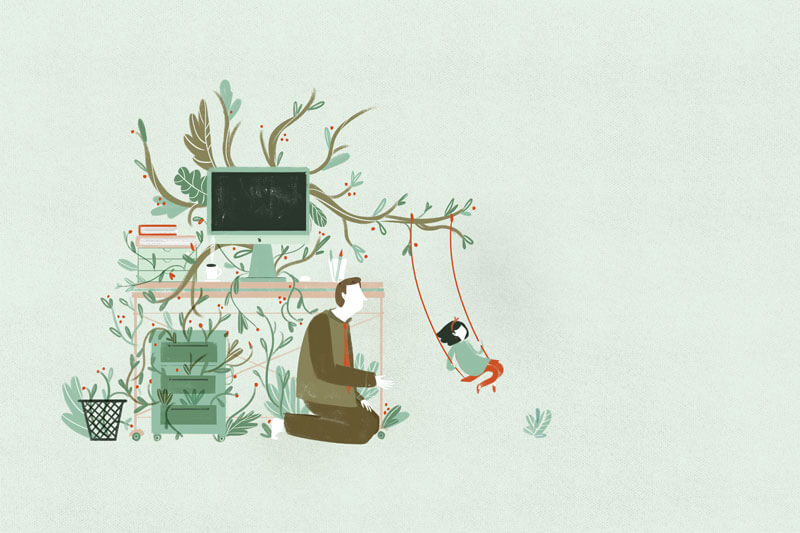By Maire Crosse, Staff Writer
During the 20th century, a now all too familiar concept started emerging. A goal to aspire to, the key to a happy and successful life: the work-life balance. With a sharp rise in what we call workaholics and stress-related diseases, and vast generational changes, the importance of understanding the relationship we have to life and work is paramount.
Work-Life Integration – A History
Work-life balance first was used as a term during the World Wars when the necessity of integrating women into the workforce became evident. In peacetime, they would never return fully to their traditional role in the home. As a result of this shift, the term ‘work-life balance’ was introduced in the 1960s and 70s to describe the harmony between personal life and work life. Essentially, the concept maintains that, in order to achieve happiness, the two central areas of one’s life should remain separate.
The conflicting ideals of women to have large families yet work the same hours as men led to women expressing the need for assistance in balancing these tasks. The ideal state of work-life balance, implied achieving success in both areas. The 1980s brought laws in Western societies that supported working mothers. In the 1990s interest surrounding the work-life balance concept peaked. It was integrated into corporate culture, and human resource policies slowly shifted accordingly. The basic and rather simple premise was that work-life balance was achievable through working 40 hour weeks and then enjoying a disconnected weekend. It was a luxury only briefly enjoyed and came to a swift end with the start of exponential technological progress.
The fast development in new technologies over the past decades, yet again shifted the definition of the relationship between work and life. The move from work-life balance towards work-life integration began. Thus, the new millennium caused a non-reversible shift in the quest for balance, from keeping personal and work separate, to the increasing inability to escape from either. The phrase work-life integration, as opposed to its predecessor, focuses on embracing the overlapping of career and private life, to allow for a blend of the professional and the personal which would make both prosper. This may have been the case to begin with; however, the 21st century has seen spikes in work-related stress that gives cause to doubt this assumption.
[ms-protect-content id=”4069, 4129″]
The Case of the Family Business
Whether a balance is achieved between work and private life is primarily influenced by the careers we chose. But what of family business members? People who chose to work with the same people they share their private lives with? The family business case deserves attention when it comes to the work-life integration topic for the following reasons:
The Fuzzy Boundaries
It is notoriously difficult for family businesses to create distinct roles for each family member that joins the business. In a first instance, a family member no matters their educational background or competencies, is always going to be viewed according to his or her place in the family. This causes for a natural spillover from behaviours at home to behaviours at work, making the boundaries between the two areas even blurrier.
The Emotional Commitment
Business families are known to pour their hearts and souls into their companies. This may vary according to personality and character, but it can be safely stated that family members who work in the business will go above and beyond to achieve its success. Such behaviour can cause a disproportionate and constant level of stress and anxiety.
The Burden of the Collective
Family members who are part of day-to-day operations, do not only carry the burden of their own work performance. The collective spirit required to run a family business adds to potential stress as failure by one family member often feels like failure for all. Also the fact that financial security is not only dependent on an impersonal employer but rather on the whole family’s attitude to work and sharing, can cause strain.
However, despite these challenges the family business bears the incredible potential to create a work environment that allows the successful integration of private and work life. Fact is; the workplace is changing. In many countries, people have the ability to choose the working environment that best suits them, which best enables them to achieve their quest for balance. We are entering the era of work-life flexibility, which proposes that our newest goal to achieve is fluidity between personal and professional life.
In a future shaped by exponential technology, family-owned businesses because of their heightened awareness of the challenges of balancing family duties with career aspirations, have the opportunity of setting standards on how to maintain a happy multigenerational workforce.
Tharawat Magazine, Issue 27, 2015
[/ms-protect-content]














